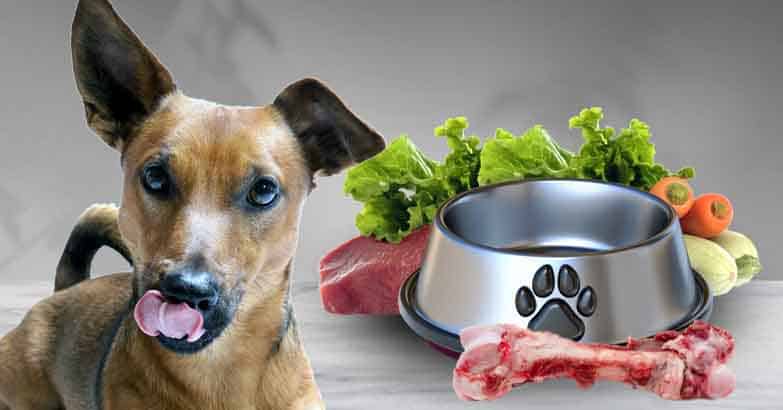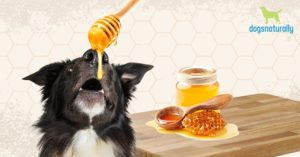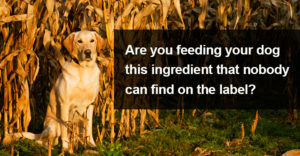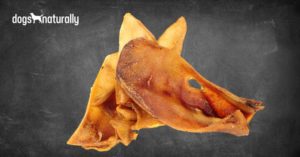Small dogs obviously need much less food than their larger counterparts but they require no less care and consideration in choosing the best dog food for small dogs. In fact, they have slightly different food requirements … and understanding that will help you choose the best quality dog food.
When you’re feeding a small dog that requires ounces of food a day, rather than pounds, you might be able to invest in better quality dog food. To help you make that decision, here’s what you need to know about choosing the best dog food for small dogs.
Nutrition Requirements For Small Dogs
First let’s clarify. When we say small dogs have different food requirements, it’s not about different nutritional balance. Small dogs need the same important nutrients as large dogs.
But small dogs often need more food for their body weight than larger dogs due to their faster metabolism. Smaller dogs have a higher surface area to volume ratio, so they lose heat more quickly and need to burn more calories to maintain body temperature. The result is that they need more calories per pound of body weight than larger dogs.
Here are 3 other reasons small dogs need different dog food:
1. Smaller Digestive System
Small dogs have smaller stomachs and digestive systems, so they may have trouble digesting and absorbing nutrients from larger meals. As a result, they may require smaller, more frequent meals that are nutrient-dense.
2. Dental Issues
Small dogs are especially prone to dental issues, which affects their ability to chew and digest food properly. It’s helpful to feed them smaller pieces of food or softer textures that are easier to lap up and digest. Dogs with dental problems may not be able to eat raw bones.
3. Energy Needs
Small dogs have different energy needs than larger dogs. While larger dogs may require more energy for activities like running and playing, small dogs may need to conserve energy to avoid becoming overexerted or fatigued. A diet that’s low in carbohydrates with moderate fat and higher protein will provide sustained energy without causing weight gain.
4. Hypoglycemia Risk
Small dogs can be more prone to low blood sugar (hypoglycemia) if they don’t eat for a few hours. Again, feeding small dogs more frequent meals can help prevent this problem.
5. Dehydration
Small dogs can also become dehydrated more easily due to their small body size. Make sure your small dog gets plenty of fresh water (give spring or filtered water, not tap water). Small dogs with diarrhea or vomiting can also dehydrate more quickly. Watch for sticky gums or pinch the skin on the back of the neck. It should return to normal immediately, but if it “sticks” together for a few seconds, your dog may need more fluids
Can Small Dogs Eat Regular Dog Food?
In terms of nutrients, yes. But, as already noted, small dogs need smaller pieces of food for easier chewing and digestion. Many dogs don’t chew their food, so larger pieces of food (especially if you feed kibble) are harder to break down in the digestive system. Larger pieces of food could even cause choking risk.
How To Choose The Best Dog Food For Small Dogs
You can use these general guidelines to help choose the best dog food for your small breed dog:
- Protein: Small dogs require a high-protein diet to maintain their energy levels and muscle mass. For any size dog, the best diet is a fresh, whole food, preferably raw diet. But if you’re not feeding a whole food diet (whether raw or cooked), look for dog foods that list a high-quality source of named animal protein (meaning a specific animal like beef, chicken, turkey, salmon or lamb, not “meat” “poultry” or “fish”), as the first ingredient. Look for crude protein content of at least 25% … but higher is better. A higher protein diet will usually contain lower carbohydrates and calories that can lead to weight gain.
- Fat: Small dogs also need good quality fat in their diet to support their energy needs. Look for dog foods that contain healthy sources of fat, such as omega-3 fatty acids. Avoid foods with seed oils. which are highly processed and contribute to inflammation in your dog.
- Size and texture: Small dogs have smaller mouths and teeth, so they need foods that are easier to eat and digest, such as small sized pieces or a softer texture. If you feed kibble, choose one with smaller pellet or nugget sizes.
- Check the ingredients: Avoid dog foods that contain fillers, starches, legumes and grains, sweeteners, artificial colors and preservatives. Look for dog foods that contain whole food ingredients and are free of synthetic additives.
- Additional nutrients: Look for omega fatty acids and whole food ingredients you can recognize … like fruits and vegetables that provide phytonutrients and antioxidants for your dog’s needs. If the ingredient name sounds like a chemical, it’s synthetic and has likely been added to replace missing nutrients due to ultra-processing or low quality ingredients. Dogs’ bodies don’t recognize synthetic vitamins and minerals and don’t absorb the as well as whole food nutrients.
RELATED: How to include healthy fats for dogs …
Best Types Of Raw Dog Food For Small Dogs
Raw diets are higher in protein than dry dog foods, and they’re more digestible and bioavailable, so your small dog will absorb nutrients better. There are prepared and balanced commercial raw dog food options as well as do-it-yourself recipes. Consider these options:
Pre-Made Raw Diets
There are a variety of commercial pre-made raw diets that are convenient and affordable options for small dogs. These diets typically contain a combination of raw meats, organs, bones and produce, and are designed to be nutritionally complete and balanced. Some can be lightly seared to appeal to finicky dogs.
Homemade Raw Diets
If you prefer to make your own raw diet, it’s important to follow balanced recipes to ensure your dog obtains all the necessary nutrients. A homemade raw diet should contain a variety of protein sources, such as chicken, beef, or fish, including muscle and organ meat and bones, along with fruits and vegetables to provide fiber, vitamins and minerals.
RELATED: Tips on getting started with a DIY raw diet for dogs …
Freeze-Dried Raw Diets
Freeze-dried raw diets are a convenient and shelf-stable option for small dog owners … they can be expensive but that may be less of a consideration. These diets are made by removing the moisture from raw ingredients and then packaging them for easy storage and feeding.
There are also air-dried and dehydrated diets that are slightly more processed and are made using heat, which can deplete nutrients. But these typically have higher protein levels and better food-based nutrients than most manufactured dry dog foods, so they’re definitely a much better option than kibble or canned foods.
RELATED: Learn why it’s better to feed a raw diet …
Are Brands For Small Breeds Good Dog Foods?
Not necessarily. Some manufacturers have a few offerings for small breeds within existing lines, and at least one well-known brand offers breed-specific formulas. You need to compare the ingredient lists and guaranteed analysis of similar recipes to determine if there is a difference in the nutrients, especially protein and fat levels. You’ll find that many don’t differ much (if at all) from standard dog food recipes. The main difference is usually the size of the kibble.
This means wet dog foods formulated for all dogs would be just as suitable for small dogs, and most are a better option than kibble. They usually have more protein, are softer to chew and are easier to digest. But if you want to ensure your dog is getting sufficient nutrients without questionable ingredients, a fresh, whole food raw diet is always the best option.
The marketplace has no shortage of options when it comes to commercial dog food. Here’s a list of some of the best dog food for small dogs.
Best Dog Food For Small Breed Dogs
These foods marketed for small dogs score well and are considered low risk dog foods based on the evaluation criteria on dogfoodreviews.com. You can read individual reviews to see specific benefits and concerns for each line of food.
1. Vital Essentials Mini Nibs (freeze dried), with a score of 10/10
2. Dr Marty Pets Nature’s Blend Small Breed (freeze-dried), score 9/10
3. Stella & Chewy’s Small Breed Chicken Superblends (freeze dried), score 9/10
4. Stella & Chewy’s Lil’ Bites Freeze Dried (freeze dried), score 8.7/10
5. Farmina N&D Prime With Chicken, Boar, Lamb or Puppy Mini Wet (canned), score 8.1/10
6. Farmina N&D Pumpkin With Lamb, Chicken, Duck, Quail or Venison Mini (canned), score 8/10
7. Castor & Pollux Pristine Grain Free Small Breed Chicken, Lamb or Beef Stew (cooked), score 8/10
8. Stella & Chewy’s Lil’ Bites Savory Stews (cooked), score 8/10
9. Nature’s Variety Original Paté Mini Beef, Chicken Or Turkey (cooked), score 7.5/10
Best Moderate Risk Dog Food For Small Breed Dogs
This list could have been longer but some “moderate risk” foods contained ingredients that aren’t suitable for a “best” list. While most dog foods contain added vitamins and minerals, many had higher carbohydrates, lower protein, ingredients with GMOs or high pesticide use, inflammatory fats, synthetic preservatives and additives like carrageenan … and one brand listed broth and water in the top 5 ingredients, rather than animal proteins or whole food ingredients.
After explaining the need to feed small dogs high protein, highly digestible, nutrient-rich diets, we excluded foods that didn’t meet those descriptions.
The following dog foods are some of the best moderate risk dog foods for small breeds based on our evaluation criteria on dogfoodreviews.com.
1. Orijen Original Small Breed (dry), score 7/10
2. Nulo Freestyle Small Breed Turkey, Lamb Or Duck (canned), score 7/10
3. Wellness Petite Entrees Shredded Medley Small Breed (cooked), score 7/10
4. Freshpet Vital Grain-Free Small Breed Multi-Protein Recipe (cooked), score 7/10
5. Farmina N&D Ocean Mini (dry). score 6.5/10
6. Canidae Pure Petite Grain-Free For Small Breed Dogs Minced Beef And Carrots (cooked), score 6.5/10
7. Nulo Medal Series Small Breed Turkey Or Duck Wet Dog Food (canned), score 6.5/10
8. Halo Holistic Grain-Free Small Breed Turkey & Duck (canned), score 6.5/10
Commercial diets are notoriously high in carbohydrate … and that contributes to dental plaque and can lead to tooth decay and dental issues. Be aware that kibble doesn’t clean teeth despite marketing statements …
Dog Food For Small Breeds With Bad Teeth
Here are some options for the best dog food for small dogs with dental problems:
- Wet or canned food is softer in texture and can be easier to eat for small dogs like Chihuahuas and Yorkshire Terriers, who are prone to dental issues. It also contains higher moisture content, which adds extra hydration.
- Homemade food with meat and vegetables is a good option. You can control the consistency and feed it raw or cooked, to make it easier to eat.
- Softened dry foods are available for small dogs with poor dental health.
- Dry food soaked in water or broth before feeding can soften food to make it easier to eat.
RELATED: Here are some dog gum disease home remedies …
Best Foods For Small Dogs With Dental Problems
And here are foods you can add to help small dogs maintain strong teeth and gums:
- Raw meaty bones can help clean a dog’s teeth and massage the gums as they chew. It’s important to choose the right size and type of bone for your dog, and to always supervise them while they’re chewing. Good choices for small dogs are bones from smaller animals such as goats, pigs and lamb. Consider lamb neck bones (which are very meaty), pork or lamb ribs.
- Raw carrots (if they chew them) can help clean your small dog’s teeth and freshen his breath … however your dog may not digest them well so you may see carrot chunks in his poop.
- Apples have natural enzymes to break down plaque and freshen breath. Remove the seeds and core as they aren’t good for dogs.
- Parsley can also freshen your dog’s breath and has antibacterial properties to prevent plaque buildup.
- Adding a probiotic to your dog’s dinner or rubbing probiotic powder on your dog’s gums can help prevent the growth of harmful bacteria in the mouth and reduce the risk of gum disease.
RELATED: Recreational bones for dogs to maintain dental health …
Worst Ingredients In Dog Foods To Feed Small Dogs
There are dog foods that aren’t recommended for small dogs (or any size dogs for that matter) due to their low-quality ingredients, high amounts of fillers, and lack of essential nutrients. Here are the worst ingredients that you’ll find in dog foods for small dogs:
- Artificial preservatives. Some dog foods contain artificial preservatives like BHA, BHT, and ethoxyquin, which can cause health problems in dogs.
- Meat byproducts. Meat by-products are low-quality ingredients made from animal parts that are not considered fit for human consumption. These foods can contain skin, hooves, beaks and represent several different species … so can be harmful if your dog has protein sensitivities.
- Grains, starches and legumes. Most dry dog foods contain high levels of grains and starches … and they’re carbohydrates. Excessive carbohydrate is an indicator of food quality as it can be used to reduce manufacturing cost. Foods that are high in carbohydrate can raise insulin and cause obesity. Some studies also show that dogs fed a high carbohydrate content have changes to their gut bacteria. High glycemic grains and starches like corn, wheat, and soy, can be difficult for dogs to digest and lead to food sensitivities and allergies.
- Synthetic vitamins and minerals. When dog foods contain fillers, grains and starches, they lack nutritional value … and they replace of desirable whole food ingredients like animal proteins, organs and fruit and vegetables. Then synthetic vitamins and minerals make up the difference. These laboratory-made nutrients don’t have the cofactors, phytonutrients and fiber needed for other cellular processes in your dog’s body … and they’re harder to digest. So the food is balanced on paper … but not in your dog.
- Excessive amounts of fats, carbohydrates and calories. While small breed dogs require more calories than larger dogs, excessive amounts can lead to weight gain and obesity and cause health problems.
RELATED: Here’s why you should avoid synthetic vitamins and minerals in dog food …
When all is considered, feeding a dog of 8 to 25 pounds may give you the ability to buy better quality food dog food … preferably homemade or pre-made raw or freeze-dried, air-dried or dehydrated food, rather than highly processed kibble or canned food.
Cost Of The Best Dry Dog Food For Small Dogs
If you’re feeding a commercial dog food, you want to avoid the cheaper grocery store options. But be aware that poor quality foods may price their food similarly to better foods, so you really need to understand the ingredient quality to recognize the difference.
The cost of feeding a small breed dog depends on a number of things including the quality of food, the size and activity level of the dog, and any special dietary requirements or health concerns. It’s a good idea to add your own supplements like probiotics and omega-3 fats instead of buying veterinary or special needs diets. If you’ve got an older dog, you might want to include digestive enzymes, antioxidants or joint support. These will add to the daily or weekly cost of your dog food for small dogs.
On average, a small breed dog may eat between 1/4 to 1 cup of dry dog food per day. The cost of a high-quality dog food can range from $1 to $4 per pound of food, with some specialty diets costing more (even though the ingredients don’t vary much from the standard offerings).
Whenever possible, buy the smaller sized bags of kibble. Once the bag is opened the fats begin to oxidize so you want to use it as soon as possible.
RELATED: How to make dog kibble more nutritious …
Cost Of The Best Raw Dog Food For Small Dogs
The cost of feeding a raw food diet to a small breed dog depends on whether you’re purchasing a prepared food or if you’re making it yourself.
The calculation to feed raw dog food for small dogs is 2-4% of your dog’s ideal body weight per day, depending on his age, activity level and health. That means if he’s a little underweight or a little overweight, you calculate based on what his weight should be. Use 4% if your dog is young and very active, or 2% if he’s less active or older. Then, if he loses weight, feed more, and if he’s gaining weight, cut back.
Depending on where you live and the availability of raw ingredients, the cost of raw food can vary widely. Many providers are regional and only operate within a limited area.
So based on the above formula, feeding a small breed dog a raw food diet could cost anywhere from $1.50 to $5 per day, or $45 to $150 per month.
Feeding small breed dogs requires less food … but just as much knowledge and information as feeding large dogs. On average, small dogs live longer so you want to feed them the healthiest diet possible to support them throughout a long, happy and healthy life.












